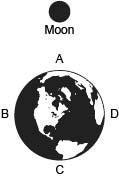
Chemistry, 13.04.2021 06:40 seraphina05
How are smaller components arranged and rearranged to create something new that is different from its parts and original arrangement?

Answers: 1


Another question on Chemistry

Chemistry, 22.06.2019 22:00
The diagrams to the right show the distribution and arrangement of gas particles in two different containers. according to kinetic-molecular theory, which of the following statements is true? check all that apply. if the temperatures of both containers are equal, container a has greater pressure than container b. if the volume of container a decreased, its pressure would decrease. if the pressure in both containers is equal, container a has a lower temperature than container b.
Answers: 2

Chemistry, 23.06.2019 13:30
The dashed segment of the plotted experiment in the graph in the lesson is called an: interpolation extrapolation extension assumption
Answers: 1


Chemistry, 23.06.2019 16:00
Challenge question: this question is worth 6 points. as you saw in problem 9 we can have species bound to a central metal ion. these species are called ligands. in the past we have assumed all the d orbitals in some species are degenerate; however, they often are not. sometimes the ligands bound to a central metal cation can split the d orbitals. that is, some of the d orbitals will be at a lower energy state than others. ligands that have the ability to cause this splitting are called strong field ligands, cnâ’ is an example of these. if this splitting in the d orbitals is great enough electrons will fill low lying orbitals, pairing with other electrons in a given orbital, before filling higher energy orbitals. in question 7 we had fe2+, furthermore we found that there were a certain number (non-zero) of unpaired electrons. consider now fe(cn)6 4â’: here we also have fe2+, but in this case all the electrons are paired, yielding a diamagnetic species. how can you explain this?
Answers: 2
You know the right answer?
How are smaller components arranged and rearranged to create something new that is different from it...
Questions

History, 26.06.2019 04:30

Mathematics, 26.06.2019 04:30


Geography, 26.06.2019 04:30

Mathematics, 26.06.2019 04:30

Chemistry, 26.06.2019 04:30

History, 26.06.2019 04:30

Mathematics, 26.06.2019 04:30



Mathematics, 26.06.2019 04:30

Health, 26.06.2019 04:30

Mathematics, 26.06.2019 04:30


Biology, 26.06.2019 04:30


English, 26.06.2019 04:30


Mathematics, 26.06.2019 04:30




